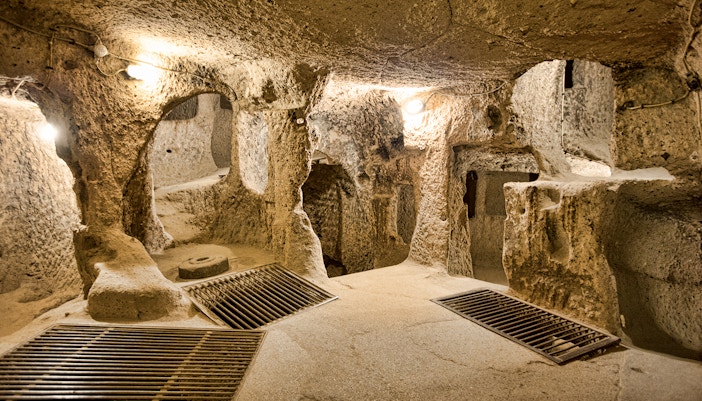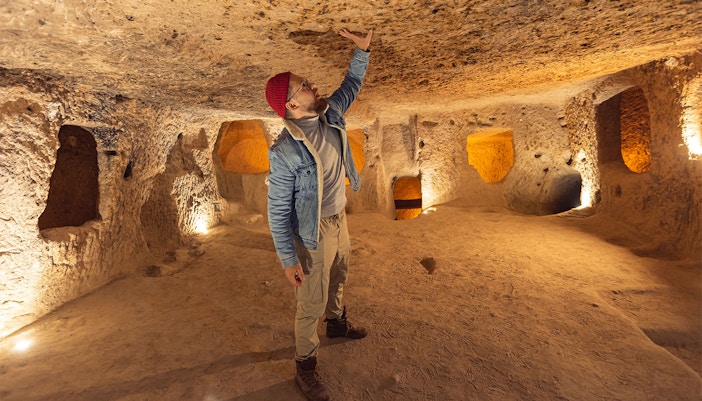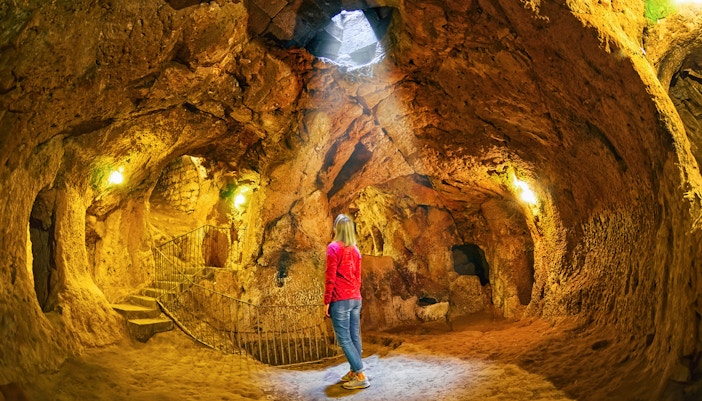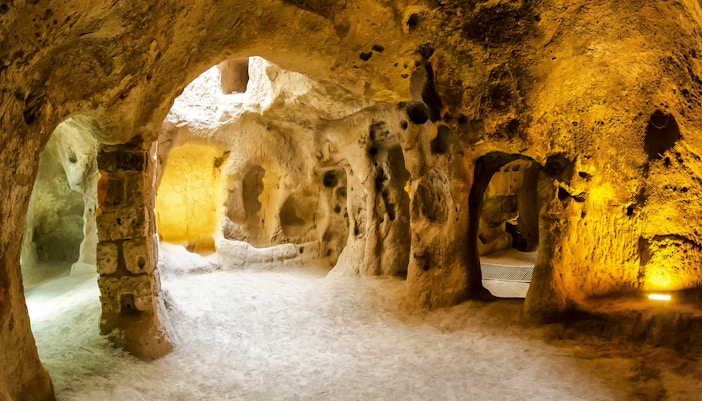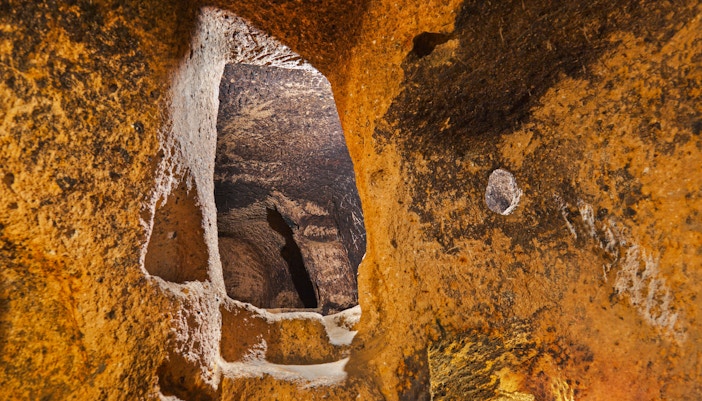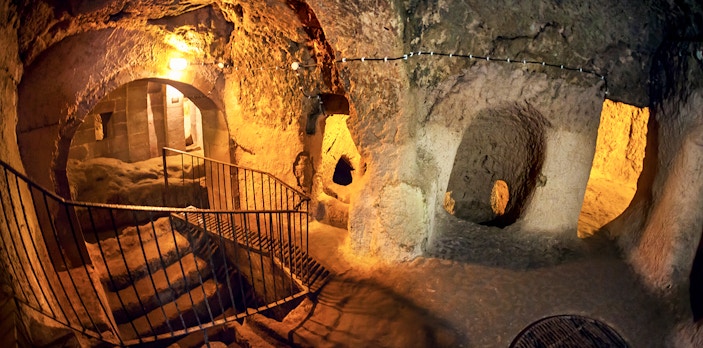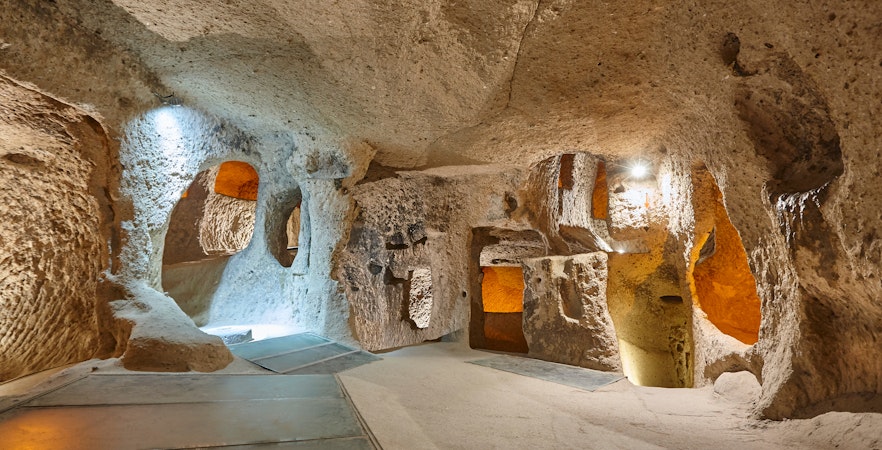- In the Cappadocia context, an underground city is a carved, multi-level settlement, dug into the soft tuff rock, complete with living quarters, storage rooms, stables, ventilation shafts and tunnels connecting different levels.
- Ventilation shafts, rolling stone doors, narrow tunnels and deep levels are common features. While there are around 200 such subterranean cities in the greater Cappadocia region, only a handful are open for regular visitors.
- They are full subterranean complexes meant to shelter large groups of people for extended periods in times of danger. For example: the site at Derinkuyu Underground City is estimated to have housed up to 20,000 people with their livestock.
- They were built for defensive purposes, to provide refuge from invaders, raids or harsh weather conditions.
- These cities also offered religious and communal safety during times of persecution (particularly early Christian centuries) in underground hidden places of worship and living.


